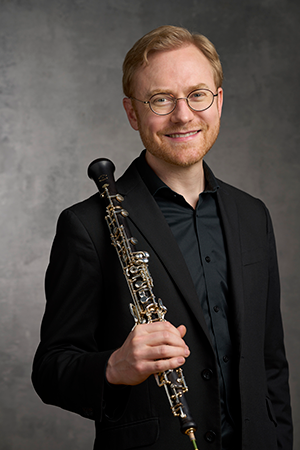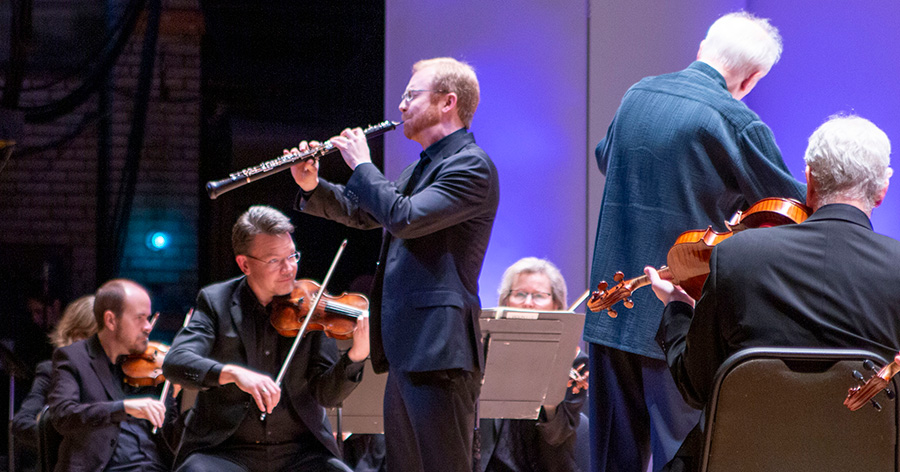Dwight Parry Discusses Connesson Oboe Concerto
by Ken Smith

Dwight Parry. Credit Roger Mastroianni
It was during Dwight Parry’s debriefing after performing Richard Strauss’s Oboe Concerto with the CSO in 2017 when talks turned to commissioning a new work for the orchestra’s principal oboist. “The list of composers was long and diverse,” says Parry. “It was a tough decision in every way, but for me the name that kept coming back was Guillaume Connesson.”
Connesson, one of the world’s most performed living French composers, had first come to Parry’s attention several years ago in South Africa, when the composer’s Sextour turned up on his music stand at the Stellenbosch International Chamber Music Festival. “The piece just grabbed me—the instrumentation, the impressionistic colors,” he says. “I wound up becoming something of a leader in that ensemble. Later when the idea of a concerto came up in Cincinnati, I had this instinct that he would write superbly for solo oboe.”
Connesson’s Les belles heures (“The Beautiful Hours”), which the CSO will perform under Music Director Louis Langrée on May 6, 7 and 8, is the first concerto specifically commissioned for Parry. He is, however, no stranger to working with composers. Parry has performed a wide range of new chamber works, solo oboe pieces, and in larger ensembles where composers have turned to the wind players to better understand the performance aspect. “Especially in chamber music, it can be a very intimate creative relationship,” he says.
But when he received the first movement of the concerto, an expressive rumination evocatively titled L’heure bleue, Parry wondered if there was much need for collaboration. “The first movement was already fairly complete and, frankly, quite idiomatic for the oboe,” he says. “So, I thought, ‘Wow, maybe you don’t need my input.’”
After receiving the third movement, however—a propulsive showpiece titled L’heure fugitive—Parry thought the writing didn’t go quite far enough. “I wrote to him right away, telling him it could be a little…well, flashier,” Parry says. Connesson wrote back immediately, admitting that he had been “a little too conservative.” Within a few days, Parry received a second version he calls “considerably more acrobatic.”
Connesson, a pianist with no personal experience playing wind instruments, credits “studying the great masters” for inspiration, but “direct communication with artists” for many significant corrections and practical modifications. “Working with Dwight has been very stimulating,” he says through a translator, “especially in going further with the solo part. He was very responsive and committed, and that enriched my work considerably. In art, the only thing that matters is the result.”
Writing Les belles heures took nearly six months of solitary effort, Connesson says—rather like a pandemic lockdown, though the composer claims to avoid any specific commentary on news or conditions of the times.
Parry agrees that the piece seems unaffected by events of the past two years. “It‘s certainly not a programmatic response to the pandemic,” he says. “The first movement is quite introspective, though, and from my perspective the music tells a story of love, adventure and surrealism that I find palpably relatable. It’s hard to imagine any artist not being affected by our times, but Guillaume seems to have transcended that and crafted something timeless.”
CSO co-commission of Connesson’s Les belles heures is made possible by Ann and Harry Santen.
